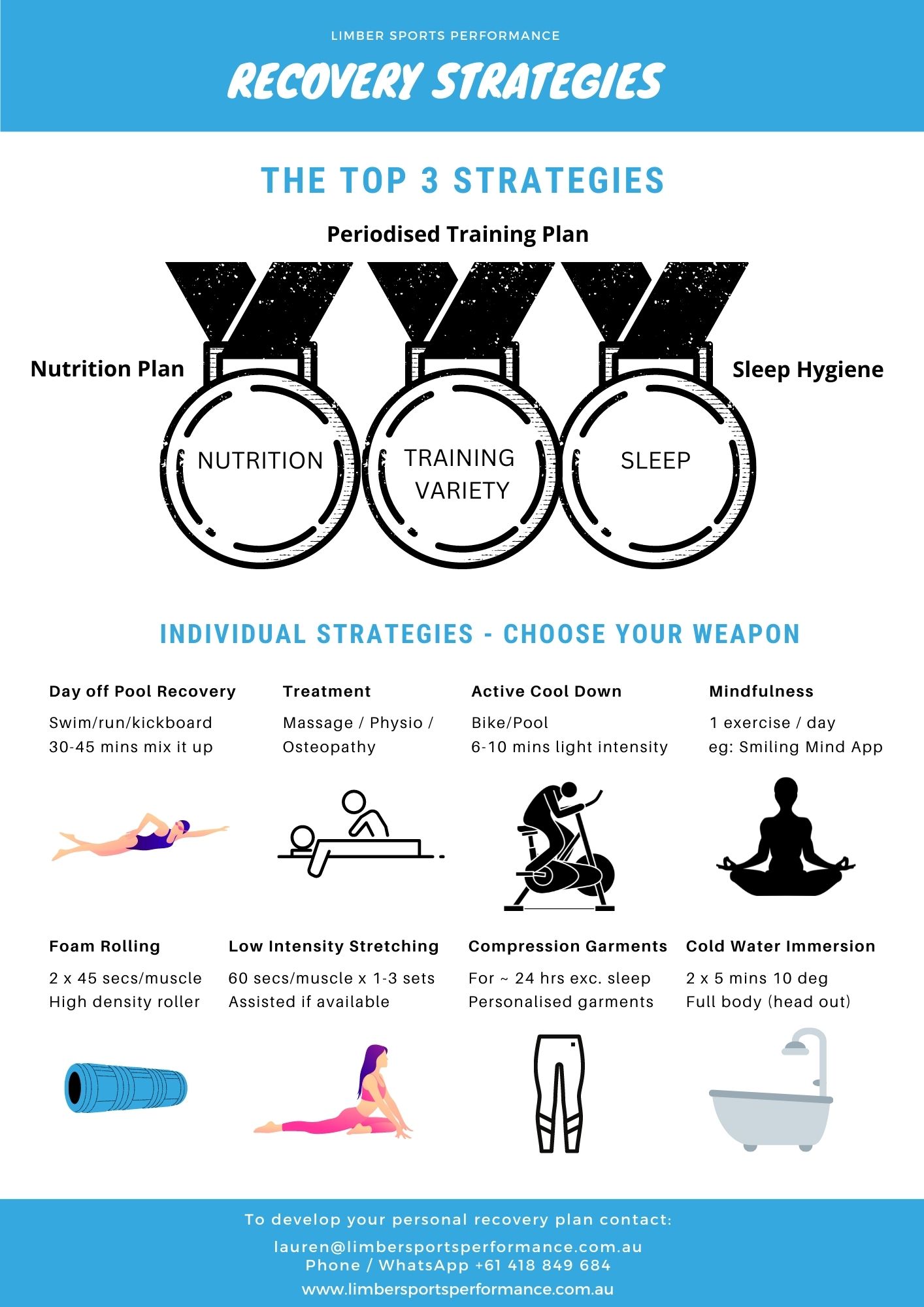Athlete Recovery Strategies
We all know it’s important to recover between training sessions and competition bouts. However, with so many recovery methods out there, it can be confusing where to start. Our Athlete Recovery Strategies infographic highlights ‘THE TOP THREE’ non-negotiable recovery strategies followed by additional supplementary strategies to help you get those additional 1% gains. If you are interested in developing your own personal recovery plan please contact us, we would be happy to help!

From the Athlete Recovery Strategies infographic above, you can see that your first three priorities must be ensuring training variety, nutrition and sleep are taken care of. We will briefly elaborate on how you can address each of these.
TRAINING VARIETY
Having an appropriately periodised training plan not only ensures that you peak for competition, but that your training sessions vary in difficulty throughout the week to provide some challenging and some easy days. The easy days serve as a form of recovery to allow you to tackle the challenging sessions head on. If you need help structuring or monitoring your training plan, please contact us, we would be happy to help you.
NUTRITION
Having a performance nutrition plan is just as important as your physical preparation program. Optimising nutrition after training can facilitate training adaptations, improve performance for subsequent training sessions and decrease the risk of fatigue, injury and illness. While optimising nutritional recovery is important for everyone, targeted nutrition strategies are particularly important for athletes training multiple sessions per day or sessions in close succession, such as an evening session followed by an early morning session. If you are interested to learn more about Nutrition related recovery check out the Sports Dietitians Australia fact sheet.
SLEEP HYGIENE
For most people 7 to 9 hours of sleep is sufficient for mental and physical recovery. However for athletes, it has been suggested that a greater quantity of sleep may assist recovery from intense training, injury, or competitions. There are a number of strategies that can assist you to improve sleep duration and quality and these are referred to as Sleep Hygiene strategies. These include ensuring an ambient room temperature for sleep, setting an ideal pre-sleep routine and strategies to ensure napping doesn’t interfere with your nighttime sleep. If you are interested in learning more about sleep hygiene stay tuned for our sleep hygiene infographic coming soon.
INDIVIDUAL STRATEGIES
What about the other methods? The additional strategies can be quite individual so you should be guided by what makes you feel more recovered for your next training session. A good way to do that is to note down how you feel from 1-10 after using the various recovery methods. You can rate a number of aspects including muscles soreness, overall fatigue and mentally rejuvenated you feel. We suggest you follow the prescriptions above for best results with each of the respective methods. At Limber we can help you developed an individualised stretching and foam rolling program to supplement THE TOP THREE Strategies. The good thing about stretching and rolling is that they are portable and cost effective strategies you can perform anytime anywhere!
